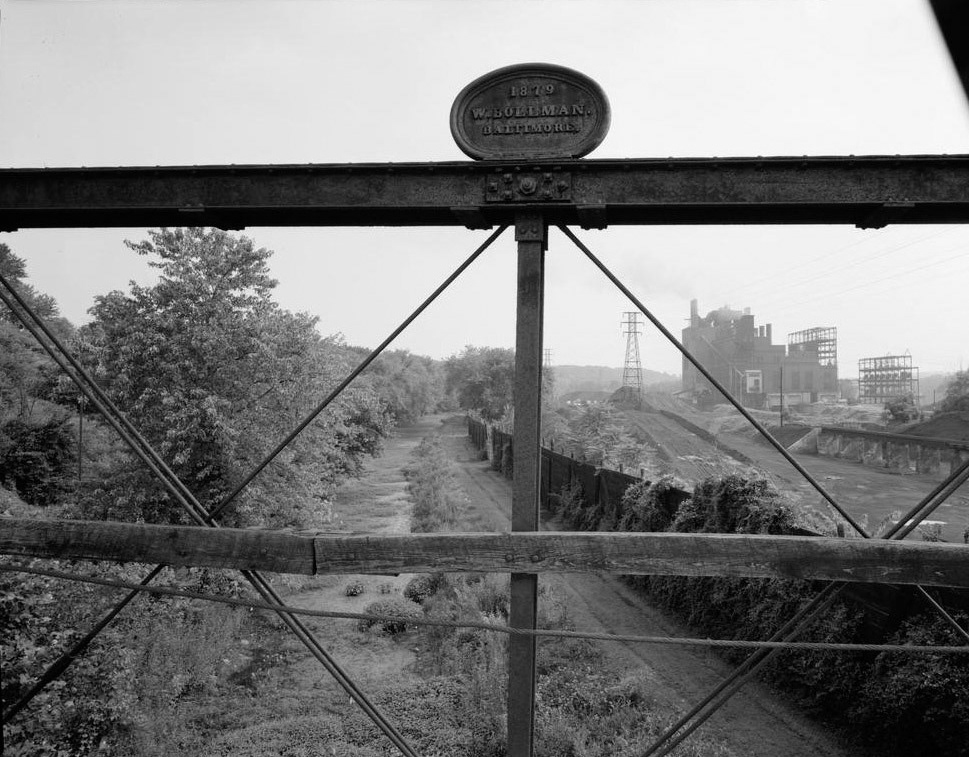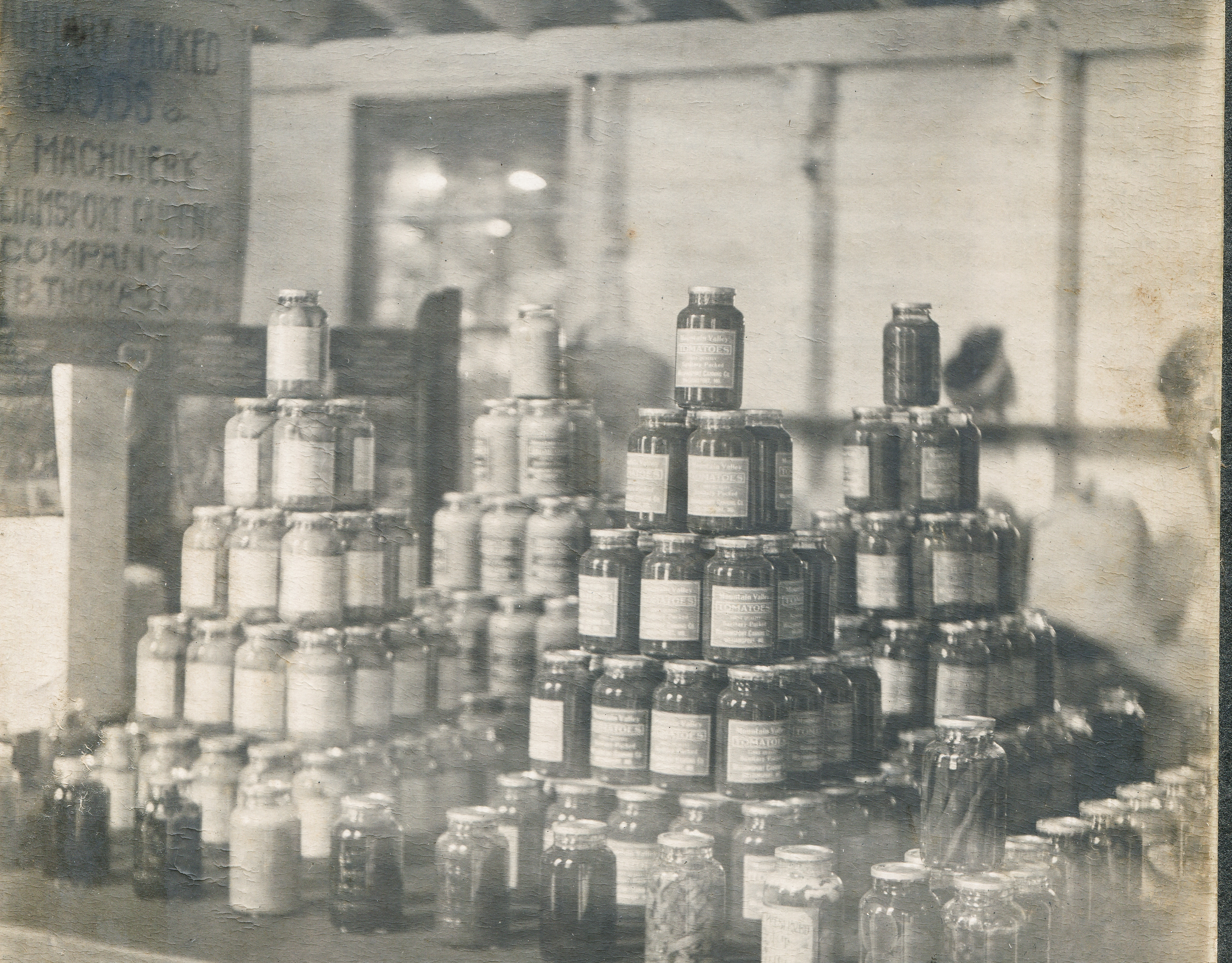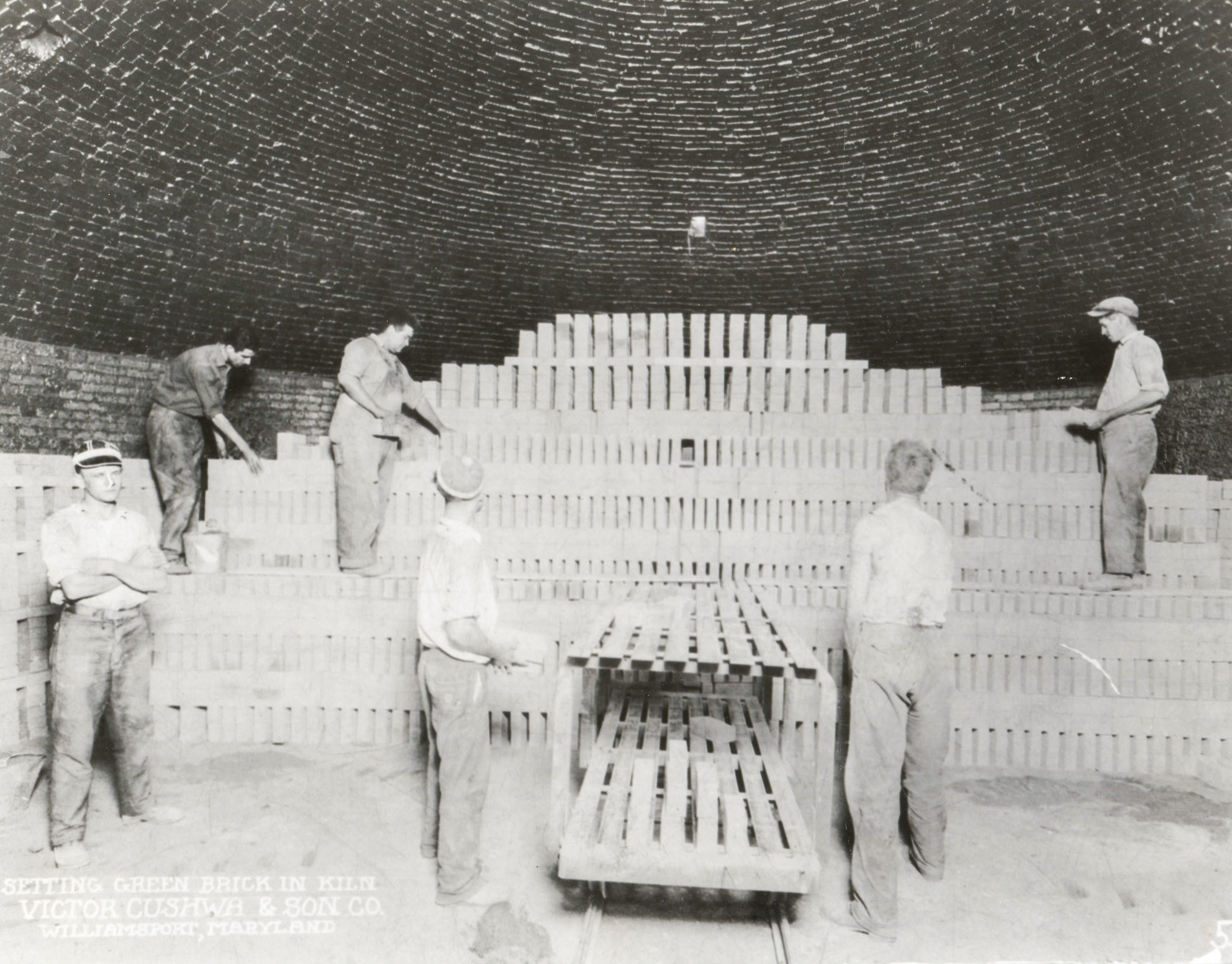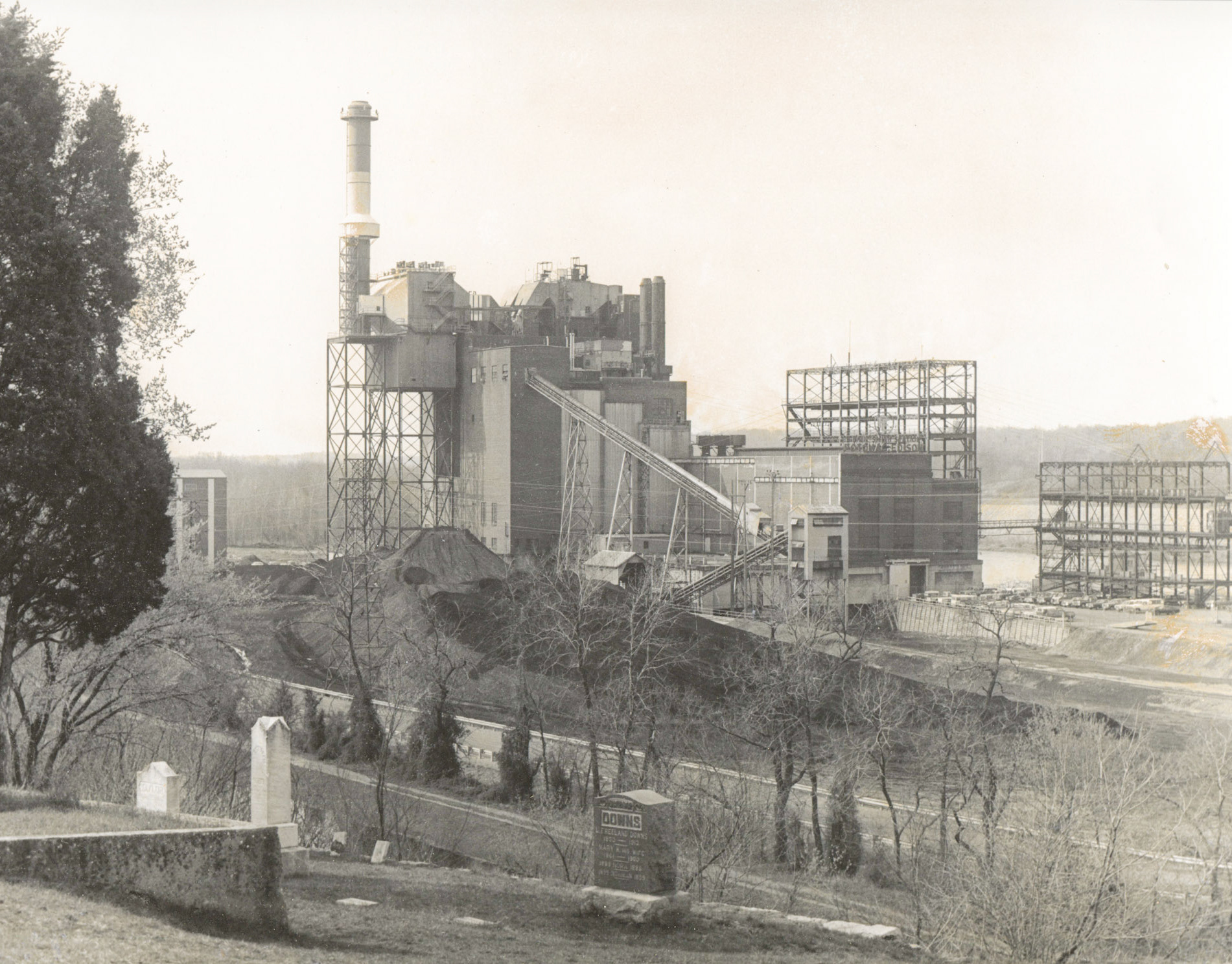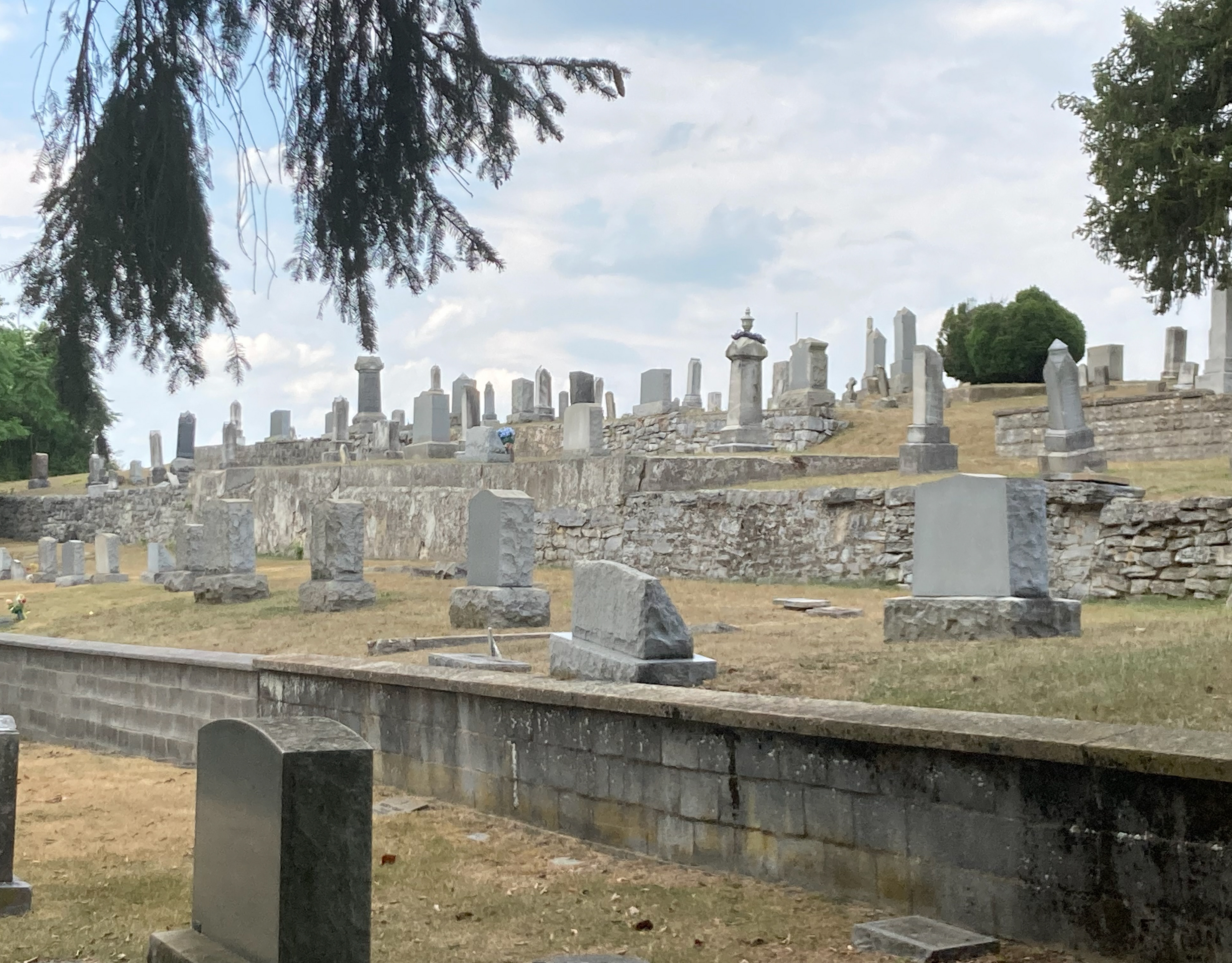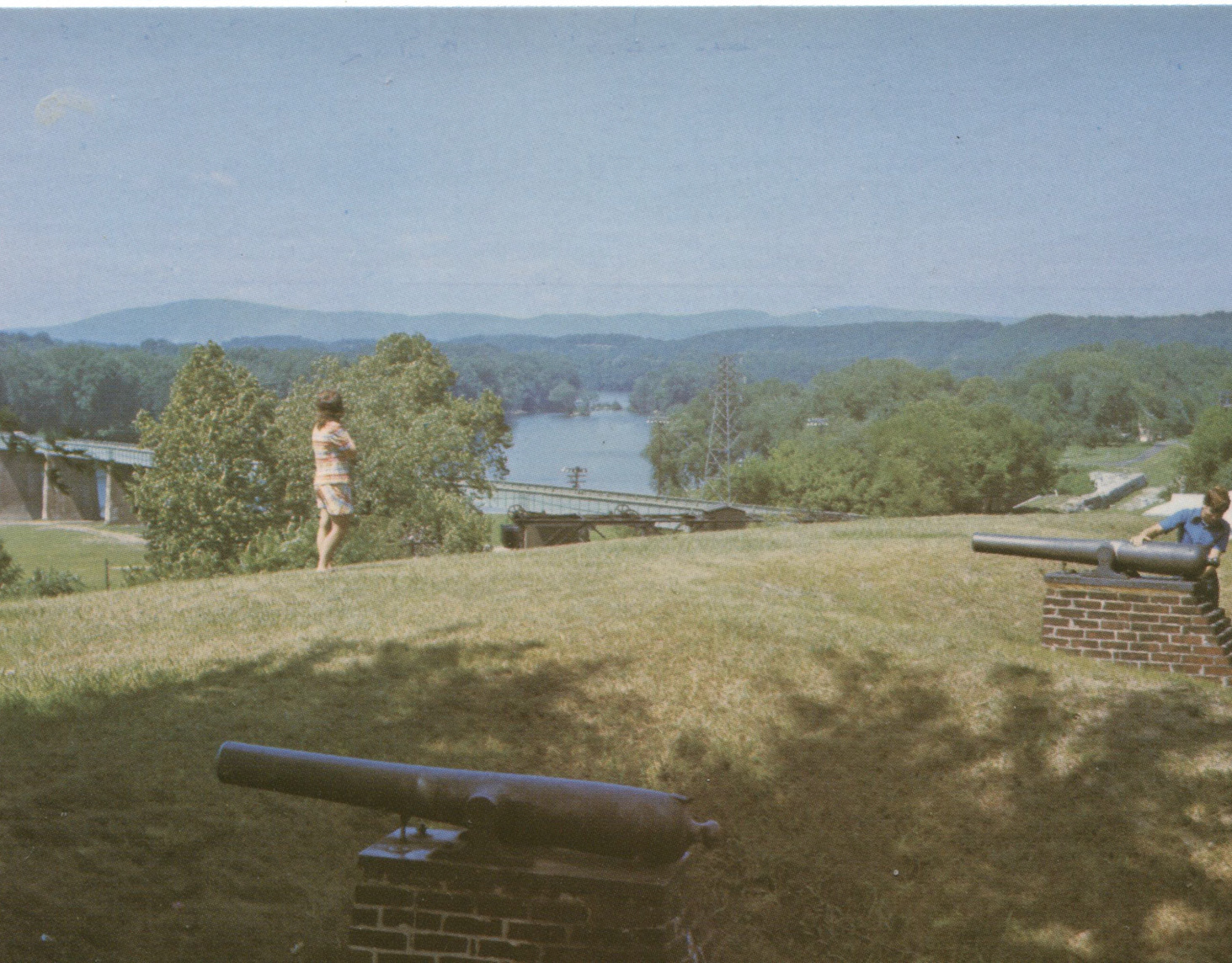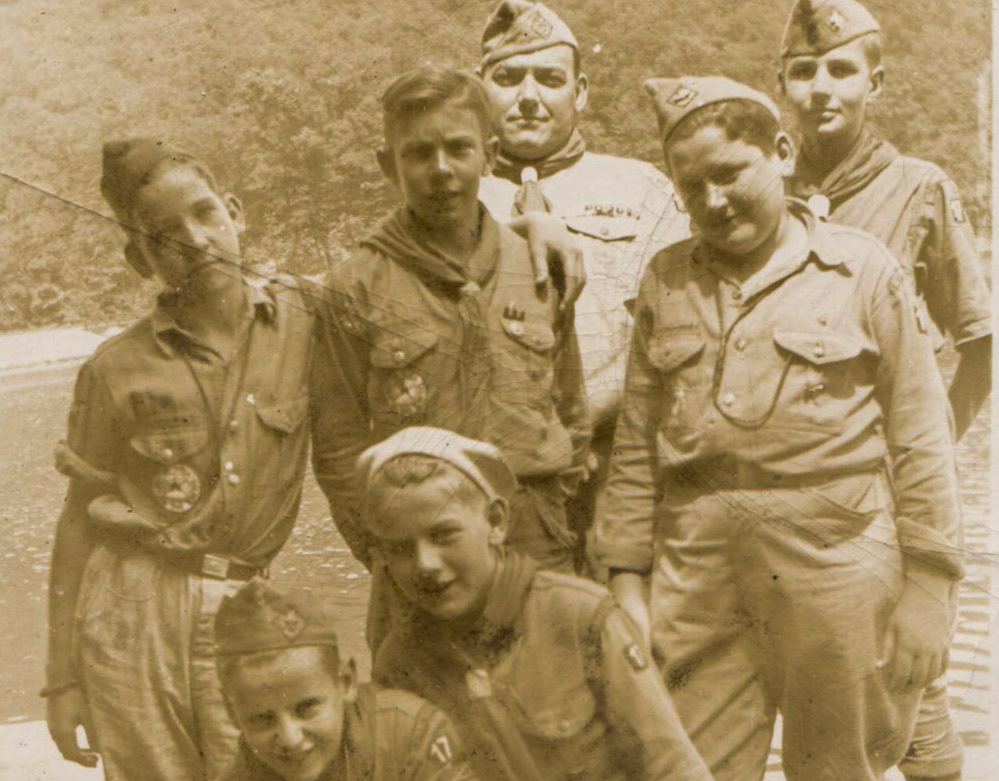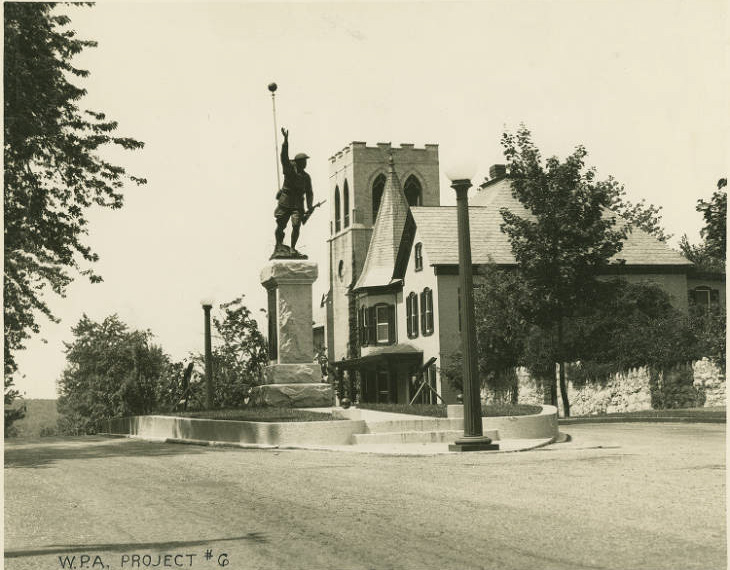Jone's Chapel formerly stood along Walnut Point Road just north of Williamsport. Constructed from hand-fired bricks over a stone foundation, the church was simple in design with two, double front doors. It looked similar to most other churches built locally from the 1820s to 1840s. A small cinder-block addition was attached to the east wall sometime between 1930 and 1950.
The fascinating story behind this chapel is the secret vault and bones that lay beneath. . .
There are a lot of questions about this old chapel, most of which will never be answered because it no longer exists. There is no doubt that Enoch Jones built the chapel during his ownership of the farm between 1805 and 1855.
The mystery at Jones Chapel was the underground chamber. Built as a self-supporting brick arch invented by the Roman’s thousands of years ago, bricks were laid over a wooden arch form, interlocking until complete, and then the wooden frame was removed. The chamber closely resembled root cellars found on almost every local farmstead. But why build a root cellar under a small rural chapel? Was there an earlier root cellar on site, and was the church built over it later? Or, were the church and chamber constructed simultaneously, and if so, to what purpose?
Enoch Jones was a staunch Methodist, yet there are no records of an established congregation at the chapel. After over 100 years of sporadic services by various denominations, the chapel closed for the last time in 1960 when that congregation built a larger church about two miles north, todays Walnut Point Chapel.
Enoch Jones was born in Southern Maryland. In 1800, he married Mary Neal from Baltimore. By 1805 the couple was living in Washington County, MD where they bought 171 acres near the Conococheague Creek from local merchant Matthew Van Lear. In 1808, Jones held a Methodist camp meeting at his farm that lasted three days. Five year later, Jones, along with other Williamsport men: Peter Light, Jeremiah Jack, and Prather, purchased a lot in Williamsport to build a Methodist Church. Peter Light owned and operated the ferry from Virginia (now WV) to Williamsport. The Methodist were serious abolitionist.
If Enoch Jones was a member of an established congregation in Williamsport, why would he build a private chapel less than four miles north? In Jones’s will, he did not devise the property to the Methodist; instead, he gave the farm, chapel, and land to his widowed daughter Eleanor Jones Hammond, with stipulations. Eleanor was sanctioned to “. . .keep sacred and in good report a certain Church or Chapel, situated upon the aforementioned premises: together with the grounds and burial places thereon to attached, for the solemn purposes to which the said Church or Chapel has been dedicated. . . ”
This was before the Civil War, when slavery was hotly debated, and the Underground Railroad ran full steam. Clearly, a relationship existed between Jones and the Williamsport Methodist as he left $400 to the church, specifying the money was to be used “for the upkeep of the chapel on his lands.”
Was the “solemn purpose” of the chapel to provide sanctuary for runaway slaves? By the time of the Civil War, the town of Williamsport was so divided on war and slavery that the pastor of the Lutheran Church threw up his hands and resigned, vowing he could be of no effect to a congregation so divided. The church did not find a replacement pastor until after the war ended.
In the early 1930s, local historian Samuel Piper recorded the names on tombstones at hundreds of churches and graveyards all over Washington County. At Jones Chapel, he noted a tombstone for both Enoch (d.1855) and Mary Jones (d.1842), and other tombstones for nearby families such as the Neikirks, Neals, and Alridges. Then Piper added, “1 grave under church, no stone. Enoch and Mary are buried under the Church.” This is the only listing in Piper’s work for anyone buried under a church. Many people (still alive) remember seeing human bones in the vault.
That information leads to more questions: if Enoch and Mary had standing carved headstones, who told Piper the Jones’s were buried under the church? And why use the term “buried?” Logically, Piper had to have been told that the Jones’s remains were under there.
When Enoch Jones deeded the land and chapel to his daughter Eleanor in 1854, he noted that a graveyard existed and was contiguous to the chapel; “a certain Church or Chapel. . . together with the grounds and burial places thereon to attached” It seems clear that when Enoch Jones and his wife Mary Jones died, they were buried in the ground in the graveyard.
The Reverend Claude Carbaugh at Jones Chapel.
Somebody dug up the Jones’s and moved their bones, but not the caskets, into the vault. It’s doubtful that Eleanor Jones Hammond would have dug up her parents before she left the farm.
Did the Pentecostals move the Jones’s in the 1930s as some odd memorial? Were the Jones buried initially beside the church, then moved when the small addition was constructed?
In 1954, now reported to be more than 100 years old, Jones Chapel underwent modernization with the installation of electricity, a new altar, and fresh paint, under the Reverend Claude Carbaugh, Pastor.
By 1959, the congregation had overwhelmed the tiny chapel, and plans were made to build a much larger church about two miles north. The last services were held at Jones Chapel in May of 1960.
During Carbaugh’s pastorate, one parishioner reported that occasionally the elders would go down into the vault and “straighten the bones,” confirming there were no coffins.
The old chapel finally fell to ruins, and subsequent owners demolished the structure and built a home over the old foundation. Sadly, nothing remains of what may have been one of the most interesting stops along the historic Underground Railroad.
If Enoch and Mary Jones, an unnamed child, were exhumed and placed in the vault many years after they died, what was the vault's original purpose? A vault with a disguised trap door under the altar indicates a desire to hide something or somebody. Was Enoch Jones an abolitionist? In 1818, he and Robert Wilson paid $450 and bought the freedom of the slave John Moody. Fellow Methodist Peter Light of Williamsport was the owner and operator of the ferry across the Potomac River. Was Peter Light providing transportation across the Potomac River into Williamsport, then leading the runaways to the chapel with its secret vault as a stop along the Underground Railroad? Unfortunately, and wisely, no one kept notes or records of this illegal activity.
The Jones Chapel Farmhouse is an 8-room two-story brick home built in the mid-1800s by Enoch and Mary Jones. The last Jones sold the farm to Williamsport merchant E. G. Stake in 1864. After Stake sold the farm in 1879, it changed hands seven more times until 1930, when Mary Moser bought it at a public auction. In 1934, the newspaper reported that after having been closed for an estimated fifty years,“ Jones Chapel, one of the oldest churches in the county, will again be used after a long abandon, through the organization of a Sunday School by a Pentecostal preaching group.”
The Moser family sold the farm in 1945 to William and Elizabeth Burkholder (pictured here).
Outbuildings at Jones Chapel Farm

